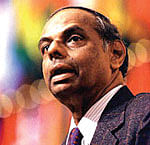
“I hope that by December-January, inflation would break and around that time perhaps a reversal (monetary) policy is possible which would keep deficit near budget levels,” Rangarajan told reporters on the sidelines of ‘Bancon 2011’, organised by Indian Banks’ Association and Indian Overseas Bank here.
The overall inflation may remain high for next one-two months after which it is expected to slowdown to around 7 per cent by the end of the current fiscal, he said.
“As the inflation rate shows definite signs of decline, the policy regime will also have to change,” he said.
The Reserve Bank, in its mid-year review of the credit policy last month, indicated that it may not increase the lending rate at its next review in December.
In its efforts to rein in inflation, RBI has raised interest rates 13 times since March, 2010.
Food inflation soared to 12.27 per cent for the week ended October 22, while the headline inflation in September stood at 9.27 per cent.
“Though inflation rates were mainly influenced by foodgrains and vegetable prices, it has now become generalised and spread even to manufacturing sector which has recorded at 7.4 per cent,” Rangarajan said. Last month, the RBI raised interest rate by 0.25 percentage points. The repo rate (at which RBI lends money to banks) increased to 8.5 per cent, while the reverse repo (a rate at which banks park their funds with RBI) rose to 7.5 per cent.
However, the central bank kept bank rate and cash reserve ratio (CRR) unchanged at 6 per cent each, while retaining the statutory liquidity ratio at 24 per cent.